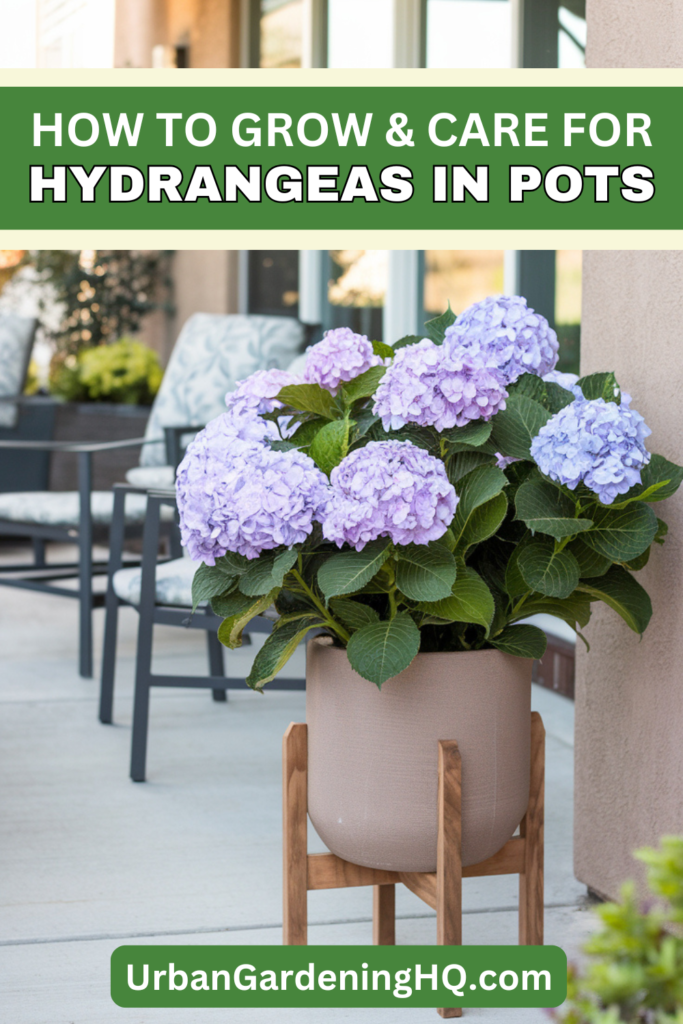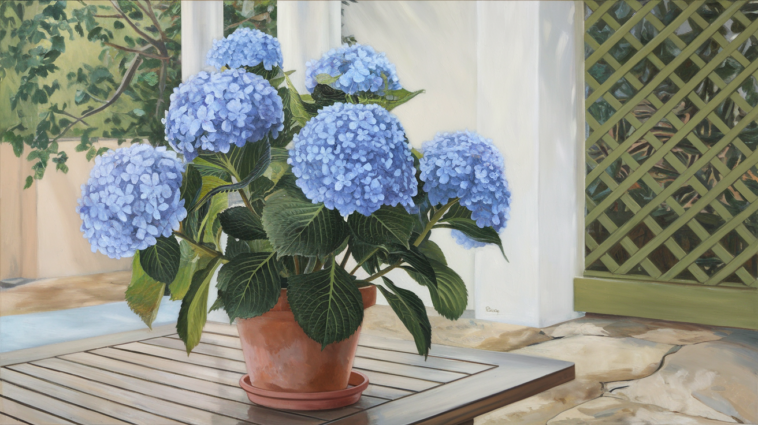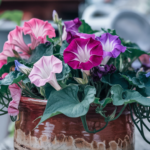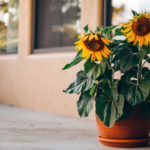Hydrangeas are a favorite among gardeners for their lush foliage and spectacular blooms. Growing them in pots allows you to enjoy their beauty even if you have limited space. Whether placed on a patio, balcony, or small garden corner, potted hydrangeas can thrive with the right care.
In this guide, you’ll learn how to successfully grow and maintain hydrangeas in containers, from selecting the best variety to watering, pruning, and overwintering.
Choosing the Right Hydrangea Variety for Pots
Not all hydrangeas are ideal for container gardening, so choosing the right variety is crucial. Compact and dwarf varieties work best in pots since they have smaller root systems and adapt well to limited space. Some of the best options include:
- Hydrangea macrophylla (Bigleaf Hydrangea) – A popular choice with large, round blooms that can change color based on soil pH.
- Hydrangea paniculata (Panicle Hydrangea) – Hardy and reliable, this variety features cone-shaped flowers and can tolerate more sun.
- Hydrangea serrata (Mountain Hydrangea) – A smaller version of the bigleaf hydrangea, perfect for containers with its delicate lacecap flowers.
- Hydrangea arborescens ‘Annabelle’ – This variety produces stunning white flowers and grows well in pots with proper care.
Selecting a hydrangea that fits your climate and available space ensures a healthy and vibrant plant.
Selecting the Right Pot and Soil

Hydrangeas require a well-draining pot that allows excess water to escape. Choose a container that is at least 18 inches wide and deep, providing enough space for the roots to grow. Larger pots also help retain moisture and prevent the plant from drying out too quickly.
For soil, use a high-quality potting mix enriched with organic matter like compost or peat moss. Avoid using garden soil, as it can become compacted and hinder drainage. A slightly acidic to neutral pH (5.5-7.0) is ideal for hydrangeas, especially if you want to control flower color in varieties like bigleaf hydrangeas.
Planting Hydrangeas in Pots
Start by filling the pot with your chosen potting mix, leaving enough space to accommodate the root ball. Gently remove the hydrangea from its nursery container and loosen the roots if they appear compacted. Place the plant in the pot so that the top of the root ball is level with the soil surface.
Backfill the pot with soil, pressing lightly to remove air pockets. Water thoroughly after planting to help the roots establish in their new environment. If growing multiple hydrangeas, ensure proper spacing between pots to allow for good airflow.
Light and Temperature Requirements
Hydrangeas prefer morning sunlight with afternoon shade, especially in warmer climates. Too much direct sun can scorch the leaves, while too much shade can reduce flowering. Place your potted hydrangea in a spot that receives at least 4-6 hours of indirect sunlight daily.
If you live in a region with harsh summers, move the pots to a shaded area during the hottest part of the day. In colder climates, provide protection in winter by moving the pots to a sheltered location or wrapping them with burlap to insulate the roots.
Watering Hydrangeas in Pots
Hydrangeas need consistent moisture, as they dry out faster in containers than in the ground. Check the soil regularly and water when the top inch feels dry. Deep watering ensures that moisture reaches the roots, helping the plant stay hydrated during hot weather.
However, avoid overwatering, as soggy soil can lead to root rot. Using a self-watering pot or adding mulch to the soil surface helps retain moisture and reduce the frequency of watering.
Fertilizing for Healthy Growth
Regular feeding encourages lush foliage and abundant blooms. Apply a balanced, slow-release fertilizer (such as 10-10-10) in early spring as new growth emerges. For extra flowering, a bloom booster fertilizer with higher phosphorus content can be used mid-season.
Organic options like compost tea or fish emulsion also work well for providing nutrients while maintaining soil health. Avoid over-fertilizing, as excessive nitrogen can lead to excessive leaf growth with fewer flowers.
Pruning and Deadheading Hydrangeas

Proper pruning keeps your potted hydrangeas healthy and promotes better blooms. The pruning method depends on the variety:
- Bigleaf and mountain hydrangeas bloom on old wood, so prune them after flowering to remove spent blooms and weak stems.
- Panicle and smooth hydrangeas bloom on new wood and should be pruned in late winter or early spring to encourage fresh growth.
Deadheading (removing faded flowers) helps redirect energy into new blooms and keeps the plant looking tidy. Simply snip off spent flowers above a healthy set of leaves.
Managing Pests and Diseases
Hydrangeas are generally resistant to pests, but container-grown plants can sometimes attract aphids, spider mites, or powdery mildew. To keep pests at bay:
- Inspect leaves regularly for signs of insects and treat infestations with neem oil or insecticidal soap.
- Ensure good air circulation around the plant to prevent fungal diseases.
- Water at the base rather than overhead to reduce the risk of mildew.
With proper care, your potted hydrangeas will remain healthy and vibrant throughout the growing season.
Overwintering Potted Hydrangeas
In regions with cold winters, hydrangeas in pots need extra protection to survive freezing temperatures. Move the containers to a sheltered spot, such as an unheated garage or basement, before the first frost. If leaving them outside, insulate the pots with burlap or straw to protect the roots from extreme cold.
During winter dormancy, reduce watering but don’t let the soil dry out completely. Once spring arrives, gradually reintroduce the plant to outdoor conditions before new growth begins.
Changing Hydrangea Flower Color
Bigleaf hydrangeas have the unique ability to change flower color based on soil pH. If you want to experiment with different shades:
- For blue flowers, increase soil acidity by adding aluminum sulfate or sulfur.
- For pink flowers, raise soil alkalinity by adding garden lime.
The change may take a season or two to become noticeable, but adjusting the soil pH can create stunning variations in bloom color.
Repotting Hydrangeas
As hydrangeas grow, they may outgrow their pots and need repotting every 2-3 years. Choose a slightly larger container and refresh the potting mix to provide new nutrients. Spring is the best time for repotting, as the plant is actively growing and can adapt quickly to its new home.
Conclusion
Growing hydrangeas in pots is a fantastic way to enjoy these stunning flowers in small spaces. By selecting the right variety, providing proper sunlight, watering consistently, and fertilizing appropriately, you can keep your potted hydrangeas thriving year after year. With a little care and attention, these elegant blooms will bring beauty and charm to your patio, balcony, or garden space.


